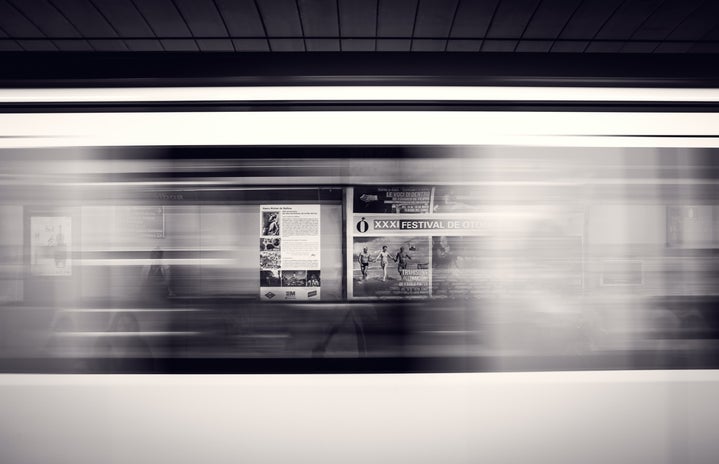Last October, the University faced a great tragedy. Lauren McCluskey, a star on the track team, was murdered. Students and administration alike mourned her loss, and dedicated themselves to making sure that such a thing never happened again. While the administration assures students that their safety is of the utmost importance, students still feel scared, especially after learning of the legal position the university is taking in the lawsuit initiated by Lauren McCluskey’s parents. In essence, the University is stating that campus police was not at fault for Lauren’s murder because they only have juristiction over students and teachers on campus. That means that they cannot help in cases that involve a student and someone from off campus. This kind of rhetoric immediately concerned students.
ASUU, the student government body, was quick to respond to the U’s legal position with a resolution stating their disappointment in the lack of responsibility the U has claimed. ASUU argues that the U’s the wording in the lawsuit could be construed as victim blaming, and they fear for the safety of students when interacting with non-students on campus. Phyllis Vetter, General Counsel to the University, wrote a response stating that “The university is deeply committed to improving campus safety,” and that “mounting a legal defense against a monetary judgement cannot and should not be equated with a rejection of responsibility.” Her statement is backed by that of Daniel Reed, Senior VP of Academic Affairs, who said that legal proceedings are a “parallel, separate process to what we’re doing on campus.” The question is, which should students trust, the rhetoric in a legal brief or the statements of placating administrators?
The University of Utah’s Academic Senate, comprising of student senators and faculty senators from each college, meets once a month to discuss university issues, policies, academics, etc. The last meeting, which took place on Monday, September 30th, discussed campus safety in depth. While meant for representatives, the meetings are open to the public, and many students came in solidarity to show their support for Lauren McCluskey and campus safety. Perhaps the most poignant question asked during the meeting was from a former teammate of Lauren’s. Obviously controlling deep emotion, she asked “Is safety still first, second, and third, if the perpetrator isn’t a U student, acknowledging that the U is an open campus?” She asked if there was any way to increase coordination between UPD and SLPD, instead of “transferring human lives off to one another.” Daniel Reed replied that campus police “is responsible for responding to actions on university campus.” Even he seemed confused, however, for he went on to say “I’m looking at our legal council in case I misspeak, here.” He went on to assure that there is coordination between UPD and SLPD, and that they are working to “improve coordination.”
October is “#SafeU Month,” but people are dubious that new programs will benefit campus when the biggest problem is a culture of not believing women and victims of domestic violence. Senator Devon Cantwell, representing CSBS, asked “what are we doing to ensure more people believe women on this campus?” Many of those attending snapped in solidarity with her question. How can we enact change knowing there are cultural boundaries to the solutions? There were many safety measures in place before Lauren’s murder. The campus police had been contacted more than twenty times. The problem was less a matter of resources and more a problem of how police responded to Lauren. Brittany Badger, head of the Wellness Center replied “I think what you’re voicing is a very real thing that we need to make sure we have some hard conversations about at this university . . . I don’t have a perfect answer for you, and I wish that I did.” This vague response doesn’t mean the university isn’t doing anything regarding safety. Daniel Reed made sure to point out the great strides and effort administration is enacting, which includes hiring additional staff, domestic violence trained police staff “who are aware of how to respond to issues, perhaps frankly, better than we should have, what happened a year ago.” The campus is also working on gaining better coordination between UPD and SLPD. This month the U has many events and trainings in a hope to increase awareness about resources and issues on campus.
At the first academic senate meeting this year President Ruth Watkins gave another presentation on improvements to campus safety. The university has added more than 140 lights to increase visibility at night, created Safe Ride, clustered night classes, made more lots U lots after 3pm, has hired new personnel, committed to more trainings for faculty and students, and of course has created #SafeU month. After the tragic incident in October of last year, a “Presidential Task Force” was created to make safety recommendations. Many of these have been enacted with the exception of the hiring of a chief safety officer, which is currently in the interview process.
There are many voices on each side, but the fact remains that students are scared. Many students were even afraid to speak up at the senate meeting. “We just want to be clear: some people are scared to speak out about it . . . We’re sticking up for our sister who was killed.” Students have feared retribution from the university for stating their opinions. The administration was quick to assuage. “We assure you … we utmost respect your freedom and we widely value your contribution to the university … You shouldn’t be afraid to be here.”
Safety is an ongoing process. As Brittany Badger said, “This work can’t stop in October.” She went on to recognize that students were scared, and that they faced the question of “how do we, kind of, reinstall some trust in those processes and in those different services. That is a challenge.” The underlying message from all of the different speakers was that safety was a priority, and that they wanted student voices to be heard. They want feedback. They want to know how students feel, even when those feelings aren’t beneficial to them. Whether they mean what they say will have to be proven in the months to come, through action, not words.



